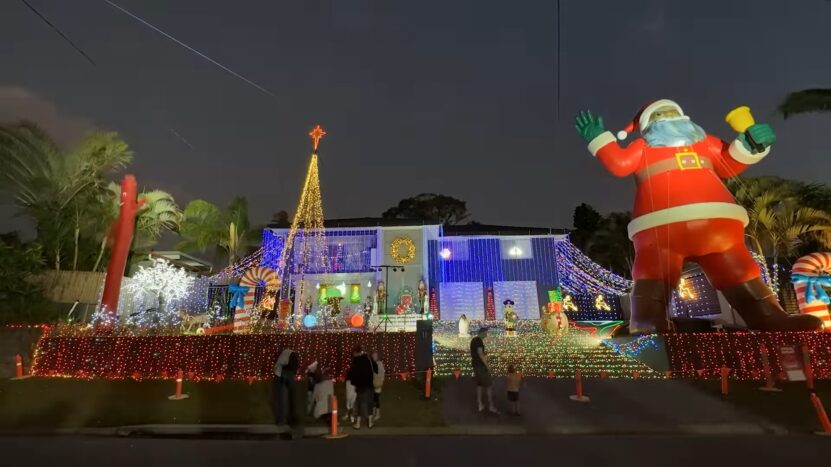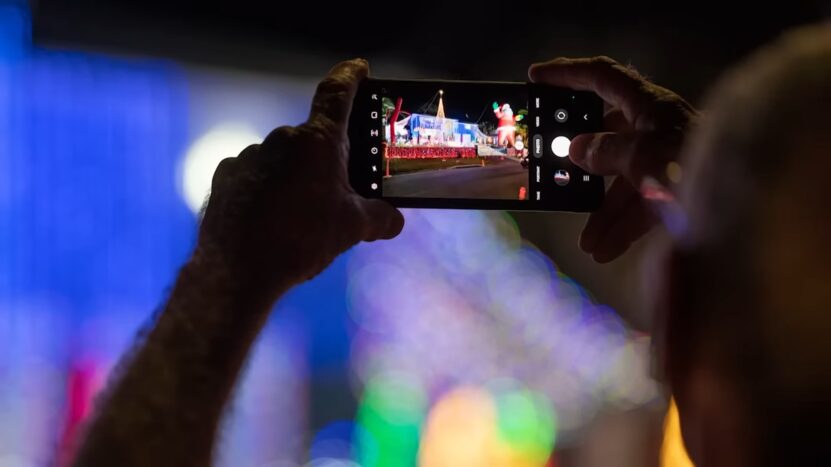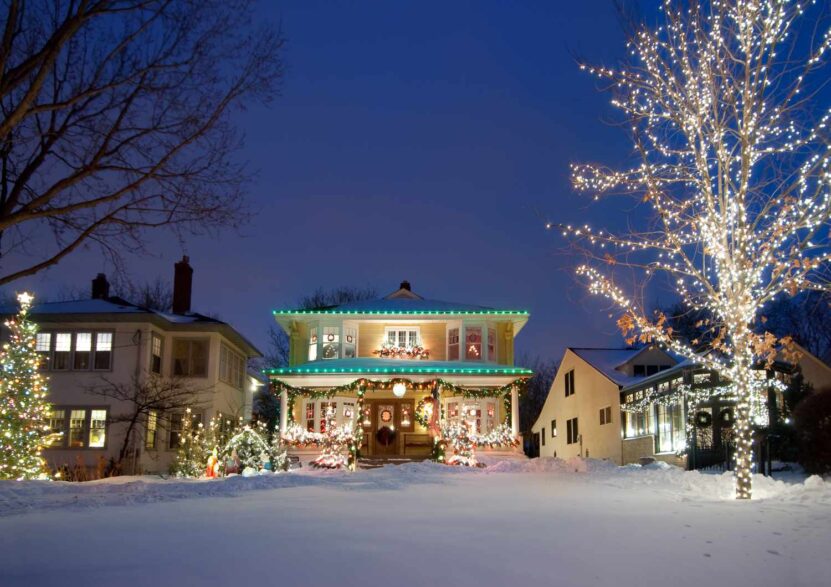With the holiday season upon us, a common question many homeowners ask is, “Can I leave my Christmas lights on at night?”
In this article, we will delve into the safety, energy consumption, and alternative options associated with keeping your Christmas lights on throughout the night.
By the end of this 3000-word article, you will have a thorough understanding of the best practices for your festive light display.
The Safety Aspect: Are Christmas Lights Safe to Leave on at Night?

While it might be tempting to leave your Christmas lights on all night long to bask in their warm glow, safety should always be a top priority.
According to the National Fire Protection Association (NFPA), electrical distribution or lighting equipment was involved in 44% of home Christmas tree fires between 2014 and 2018.
The risk of a fire increases if you are using damaged lights, overloading electrical outlets, or using low-quality products.
However, if you follow proper safety measures and invest in high-quality lights, the risk of a fire is significantly reduced. UL (Underwriters Laboratories) or ETL (Electrical Testing Laboratories) certifications are markers of quality and safety, so always look for these logos when purchasing Christmas lights.
Additionally, make sure to inspect your lights for any signs of wear and tear, replace burnt-out bulbs, and avoid overloading outlets.
Energy Consumption: How Much Power Do Christmas Lights Use?

Energy consumption is another factor to consider when deciding whether to leave your Christmas lights on overnight. The amount of energy used by your lights will depend on the type of bulbs, the number of bulbs, and how long they are left on.
Incandescent bulbs consume more energy than LED bulbs, which are more energy-efficient. For example, a 100-bulb string of mini incandescent lights uses about 40 watts of power, while a comparable string of LED lights uses only about 5 watts.
If you leave your Christmas lights on for 12 hours a day, the cost of using incandescent lights for a month would be about $5, while the cost of using LED lights would be around $0.60.
LED vs. Incandescent Lights: Which One is Better for Overnight Use?
LED lights are a better choice for overnight use for several reasons:
Energy Efficiency
As mentioned earlier, LED lights consume significantly less power than incandescent bulbs. They convert about 95% of the energy they use into light and only waste 5% as heat, while incandescent bulbs waste about 90% of the energy as heat. This means that LED lights are not only more cost-effective but also better for the environment.
Longer Lifespan
LED bulbs last up to 50,000 hours, while incandescent bulbs last only about 1,200 hours. This means you’ll save money on replacement bulbs and reduce waste.
Safety
LED lights produce less heat than incandescent bulbs, reducing the risk of fire. Additionally, LED bulbs are made of plastic, which is less likely to shatter compared to the glass used in incandescent bulbs.
Alternative Options: Timers, Solar-Powered Lights, and Smart Plugs
If you’re still concerned about the safety and energy consumption of leaving your Christmas lights on at night, consider these alternative options:
Timers
By using a timer, you can schedule your Christmas lights to turn on and off at specific times. This ensures that your lights are not left on all night, reducing the risk of fire and saving energy. Many timers are weather-resistant, making them suitable for outdoor use.
Solar-Powered Lights
Solar-powered Christmas lights are an eco-friendly option that doesn’t require electricity. During the day, the solar panel charges the battery, and at night, the lights turn on using the stored energy.
While the brightness and duration of illumination may be affected by the amount of sunlight received, solar-powered lights are a great way to enjoy your festive display without worrying about energy consumption.
Smart Plugs
By connecting your Christmas lights to a smart plug, you can control them remotely through a smartphone app, or voice commands via a smart speaker. This allows you to turn your lights on and off, set schedules, or even create custom lighting patterns.
Tips for Safe and Efficient Christmas Light Use
Choose LED Lights
LED lights are a smart choice for your Christmas decorations because they consume significantly less energy than incandescent bulbs, saving you money on electricity bills. Additionally, LED bulbs have a longer lifespan, lasting up to 50,000 hours compared to incandescent bulbs’ 1,200 hours. This means fewer replacements, reduced waste, and lower costs in the long run.
Inspect Your Lights
Before you start decorating, thoroughly inspect your Christmas lights for any signs of damage, such as frayed wires, broken bulbs, or cracked sockets. Damaged lights can cause electrical shorts or fires, so it’s crucial to address any issues before putting them up. Replace any burnt-out bulbs and discard any light strings with visible damage.
Safety Certifications: Why UL or ETL Certified Lights Matter
When purchasing Christmas lights, look for products that have been certified by Underwriters Laboratories (UL) or Electrical Testing Laboratories (ETL). These certifications indicate that the lights have undergone rigorous testing to meet safety standards. Using certified lights reduces the risk of electrical issues and potential hazards.
Avoid Overloading
Overloading electrical outlets by connecting too many light strings together can lead to overheating and increase the risk of fire. Always follow the manufacturer’s guidelines for the maximum number of light strings that can be connected together. This information can usually be found on the packaging or in the user manual.
Outdoor Safety Precautions
For outdoor light displays, use extension cords and power strips specifically rated for outdoor use. These products are designed to withstand harsh weather conditions and protect electrical connections from moisture. Additionally, utilize weatherproof covers for your outdoor electrical outlets to prevent water from seeping into the connections, which can lead to electrical shorts or fires.
Embrace Technology
Incorporating technology into your Christmas light setup can provide added safety and energy efficiency. Timers allow you to schedule your lights to turn on and off at specific times, reducing energy consumption and lowering the risk of fire.
Solar-powered lights harness the sun’s energy during the day and illuminate your display at night without using electricity. Smart plugs enable you to control your lights remotely through a smartphone app or voice commands, offering the convenience of scheduling and customization.
For more tips on how to ensure the safety of your Christmas lights, check out this article on how to find the bad bulb on Christmas lights without a tester.
Final Words
In conclusion, leaving your Christmas lights on at night is generally safe if you follow proper safety precautions, use high-quality lights, and opt for energy-efficient LED bulbs. However, it’s essential to be aware of the potential risks associated with leaving lights on overnight and with taking steps to minimize those risks.
By using alternative options such as timers, solar-powered lights, or smart plugs, you can create a stunning light display without compromising safety or energy efficiency. By following the tips provided in this article, you can ensure that your home is illuminated with festive cheer while keeping your family and property safe.

